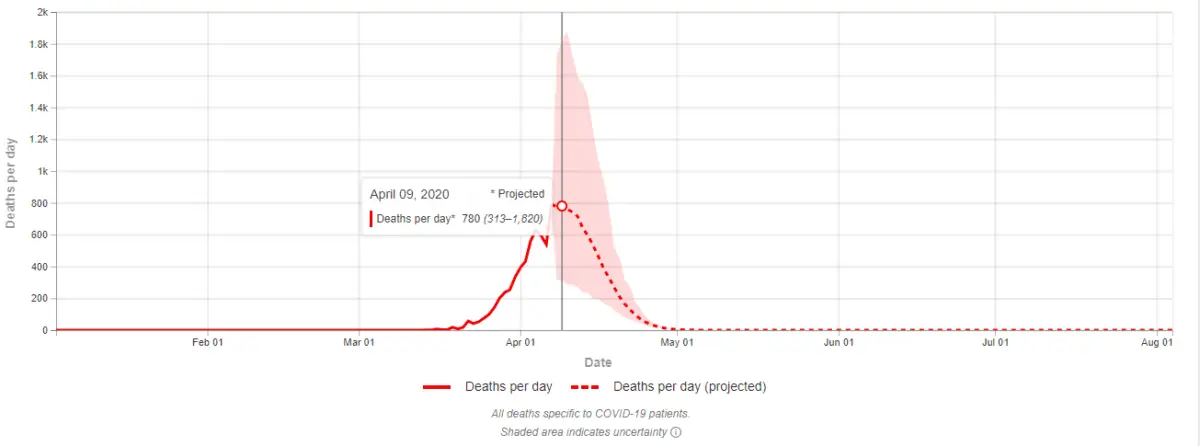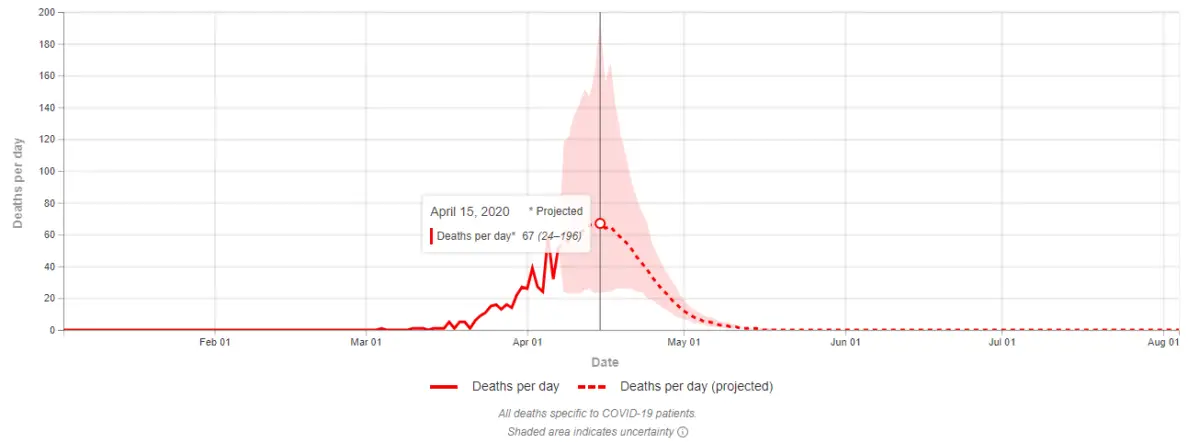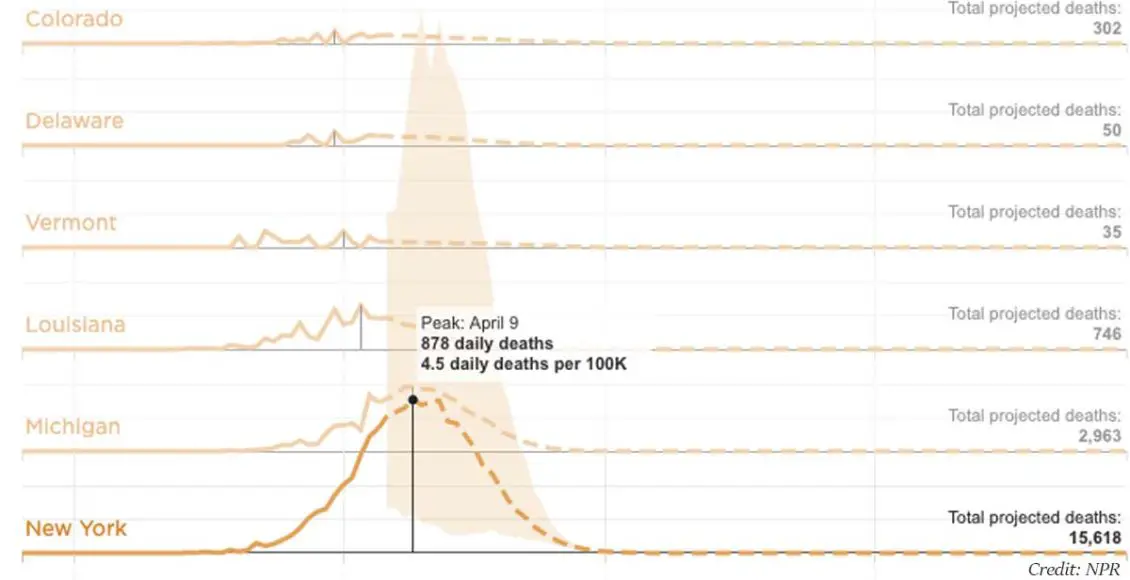People all across America are wondering when will their states hit their worst pandemic point.
Recently, White House briefings cited the COVID-19 projections of the Institute for Health Metrics and Evaluations.
The institute’s predictions are taking into account the current trend line of deaths in the states and the estimated impact of social distancing measures. This way they are forming predictions about when will each state reach peak daily deaths and hospital usage.
These projections, even if they’re imprecise, will be extremely useful to policymakers and hospital leaders. They are designed to give hospitals an idea of how fast and rapidly they may need to expand their capacity.
IHME researchers frequently update the model based on newly available data.
Some of the changes they make have already resulted in drastic shifts. According to the model’s lead researcher Chris Murray, the latest major update showed fewer people dying over a shorter period of time.
Murray warns that when social distancing measures stop being mandatory, outbreaks could spark up again.
“If you ease up prematurely the epidemic can rebound right back to the level we are at now in a matter of weeks. So the potential for rebound is enormous if we let up on social distancing.”
NPR analyzed the projections by looking at deaths per 100,000 residents to easily compare states with vast differences in populations.
Of course, there are high levels of uncertainty when it comes to predictions about the future. There is a massive gap between the national model’s low and high estimates for peak daily deaths: 1,300 and 7,700. Moreover, when it comes to individual states, they also have large gaps in this manner. For instance, New York’s daily deaths are predicted to reach its peak on April 9th, but they could range between 313 and 1,820.

While announcing recent updates at a press conference on Monday, April 6, Chris Murray acknowledged the challenge this wide range poses to decision-makers.
Understandably, he advised hospitals to prepare for the worst scenarios.
“In places where there’s a rapidly rising epidemic — New York, New Jersey, now other places — the ability to predict that exact peak is not as accurate as we previously said. Resource planners should pay attention to the upper bound so we’re not caught off guard.”
By Wednesday, April 8, the state of New York is nearing 5,500 coronavirus death cases. Thursday is expected to be the day with the highest daily deaths. The state may become the hardest hit in the U.S. as IHME’s projecting model predicts the total deaths to raise between 12,000 and 22,000.
What’s more, the model also looks at hospital bed shortages. In New York, it projects a stunning shortfall culminating in the middle of this week. The state is projected to need between 14,000 and 45,000 beds.

Despite having twice as many residents, California is expected to see fewer deaths than New York.
Therefore, the death rate there will be much lower relative to the number of people living in the state.

According to Ali Mokdad, a professor of health metrics sciences at IHME, the difference displays the impact of the social distancing measures California took. He explains:
“California started social distancing before New York. [Californians] had one week ahead of them in order to deal with the problem, and took the right measures, and we’re seeing the benefit.”
The IHME model makes essential assumptions about the reactions of the states’ leaders.
Researchers working on the projections believe these reactions can change the whole picture.
What’s more, the model assumes that the quarantine across the U.S. will continue through the end of May. The predicted period is much longer than the White House has asked Americans to practice self-isolation. Besides, according to the projections, states that have not closed their schools and nonessential businesses, and have not issued social distancing measures will do so in no later than a week.
For instance, even though Massachusetts has closed nonessential businesses and schools, they haven’t implemented the stay-at-home order yet. The model predicts dramatic daily death tolls even higher than the ones in New York.

Mokdad believes social distancing is crucial and communities and individuals can still make a difference in the way the pandemic transmits.
“We’re modeling [based on] your deck of cards right now. If you change the deck of cards, it’s going to be totally different. If people do a better job, it’s going to go down. If they don’t — if they ignore recommendations and start partying and going out — then they will have more mortality.”
Have in mind that the data displayed in the projection model shows the day each state may reach its worst day for deaths between now and the beginning of August. Surges that could happen after August 1 do not reflect on the predictions.
The data showed in the images in this article is current as of April 8th, 2020.
Updates will occur periodically as the researchers input new data.



